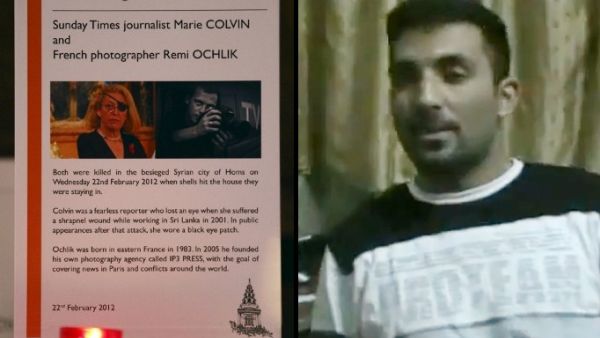Wednesday’s tragedies in Syria, particularly in Homs, provide an occasion to highlight several salient truths about the crisis under way in that country as it heads for its grim, one-year anniversary next month.
The deaths of Marie Colvin and Remie Ochlik are receiving much attention, and rightly so. They risked their lives to help tell the world about the horrific violence in Homs, under siege by government troops. Ochlik was a rising star in the world of photojournalism. Colvin was a veteran of war zones, and she eerily said, a few hours before her demise, that the Syrian uprising stood as the worst situation she had ever seen.
Their killings came just after the news that Anthony Shadid, of The New York Times, succumbed to an illness while entering Syria to cover the conflict.
However, they’re not the only ones risking their lives to convey what is taking place; Rami al-Sayyed, an activist who was responsible for delivering the news via YouTube, was killed in Homs the day before, according to reports Wednesday.
The news comes as the daily casualty figures remain in the dozens, sometimes topping the grisly mark of 100. The Red Cross is pleading for a daily two-hour cease-fire to come into effect to tend to the wounded.
Despite all of the attempts by the Syrian regime and its defenders to play down the violence and label it the work of “armed terrorist gangs,” bombardment, shootings and other forms of violence in which civilians and other non-combatants such as journalists pay the price continue at a frighteningly steady pace.
The attempts by the Syrian government to impose a news blackout, manipulate the news, or rely on cliches have all failed to keep Syria’s crisis from its own people, and the world. Courageous foreign correspondents sneak into the country to tell the story; courageous Syrian activists are also getting the message out, in the form of their “raw material” that others then evaluate.
YouTube and other forums, along with traditional and new media, have exposed the level of the death and destruction; the casualty figures are one thing, while each loss of life indicates an unknown number of other people who have been affected in some way.
The regime continues with its “security approach” to resolve the crisis, namely bombings, shootings, arrests and intimidation, and with each flare-up or spectacular incident of violence, analysts look to the calendar and speculate as to whether Damascus is trying to pound the opposition as harshly as possible before an upcoming meeting or event. Friday’s Friends of Syria meeting in Tunisia is the latest such awaited development, but few people believe that afterward things will improve.
Reporters, activists and others have been steadily relaying the news that the situation on the ground is horrific, and one can expect that more talk is not going to solve anything.








